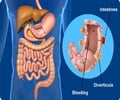cfDNA helps diagnose and monitor metabolic diseases like obesity, type 2 diabetes, and MAFLD by revealing genetic and epigenetic markers.
- cfDNA detects obesity, diabetes, and liver disease early
- Tracks inflammation and metabolic changes over time
- A promising alternative to invasive tests like biopsies
Circulating Cell-Free DNA in Metabolic Diseases
Go to source). Circulating cell-free DNA (cfDNA) contains genetic and epigenetic factors from the tissue of origin that can be identified and analyzed to know the pathological and metabolic conditions.
More than one billion people are living with #obesity worldwide. #diabetes #cfdna #medindia’
Characteristics of Circulating Cell-Free DNA (cfDNA)
Factors like insulin resistance, chronic inflammation, and dysregulated lipid and glucose metabolism cause metabolic disorders. With the help of cfDNA as an active biomarker, diagnosing and monitoring these diseases can be improved.cfDNA is released from cell death events like apoptosis, necrosis, and NETosis (release of neutrophil extracellular traps). It releases cfDNA fragments into the bloodstream or other body fluids like urine and saliva.
The size of cfDNA fragments is between 160 to 180 bp in length and is highly found between 166 to 167 bp, corresponding to the size of a chromatosome.
A chromatosome is a structure consisting of a nucleosome. This length distribution highlights how cfDNA is being protected from nucleases due to its association with proteins. It suggests that cfDNA is mostly released from apoptotic cells. Larger fragments may be released from necrosis, which has been observed in certain diseases.
Molecular Signatures in cfDNA
Since cfDNA retains epigenetic signatures of the tissue from which it originated, its analysis can provide insights into disease-related epigenetic changes (e.g., methylation patterns) that are vital in understanding various metabolic disorders.While cfDNA is widely studied in cancer and prenatal screening, its role in metabolic disorders is slowly being explored. Studies have shown that obese individuals, including pregnant women, tend to have higher cfDNA levels compared to those with normal weight. Elevated cfDNA is associated with chronic low-grade inflammation and Insulin resistance.

Inflammatory Role of cfDNA
cfDNA fragments can activate inflammatory pathways through the toll-like receptor 9 signaling pathway leading to macrophage activation. It was shown that cfDNA released from adipocytes (fat cells) can be the cause of the inflammatory state observed in obesity and disease progression.Some studies have shown that cfDNA could be used to study adipose tissue inflammation and cell death in obesity, providing a noninvasive diagnostic approach.
Research comparing lean and obese minipigs found specific differentially methylated regions in cfDNA, highlighting its potential as a diagnostic tool for obesity-related metabolic changes.
Cell-Free DNA in Diabetes
T2D is associated with insulin resistance, β-cell dysfunction, and chronic systemic inflammation. Recent studies suggest cfDNA can be used to identify complications of T2D, such as diabetic retinopathy and kidney disease, by analyzing specific epigenetic markers like 5hmC (5-hydroxymethylcytosine) found in cfDNA.In type 1 diabetes (T1D), cfDNA is being explored as a marker for β-cell death, and assays are being developed to differentiate β-cell-derived cfDNA from other factors.
Methylation patterns in the INS gene (insulin gene) have been investigated as a potential marker for T1D onset. However, more research is needed for validation and a reliable diagnostic approach.
Cell-Free DNA in Metabolic-Associated Fatty Liver Disease
While cfDNA has shown its potential in diagnosing metabolic diseases, the protocols used by different laboratories need to be validated and standardized. Ensuring reproducibility and consistency in cfDNA analysis is essential for clinical adoption.As research advances, cfDNA could revolutionize clinical diagnostics, offering a more accessible and cost-effective way to monitor these prevalent health conditions.
Reference:
- Circulating Cell-Free DNA in Metabolic Diseases - (https://academic.oup.com/jes/article/9/2/bvaf006/7954256?login=false)
Source-Medindia
















